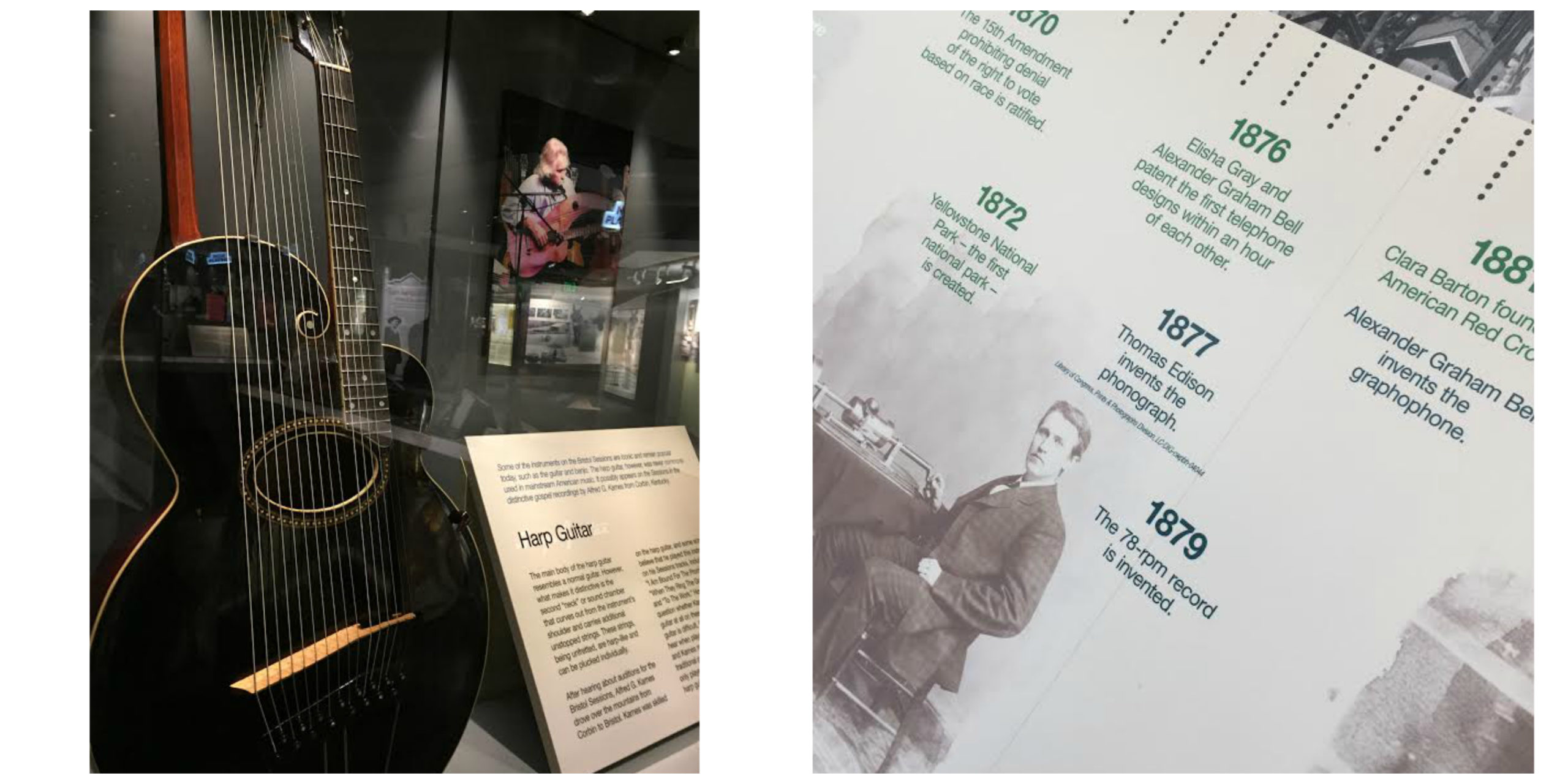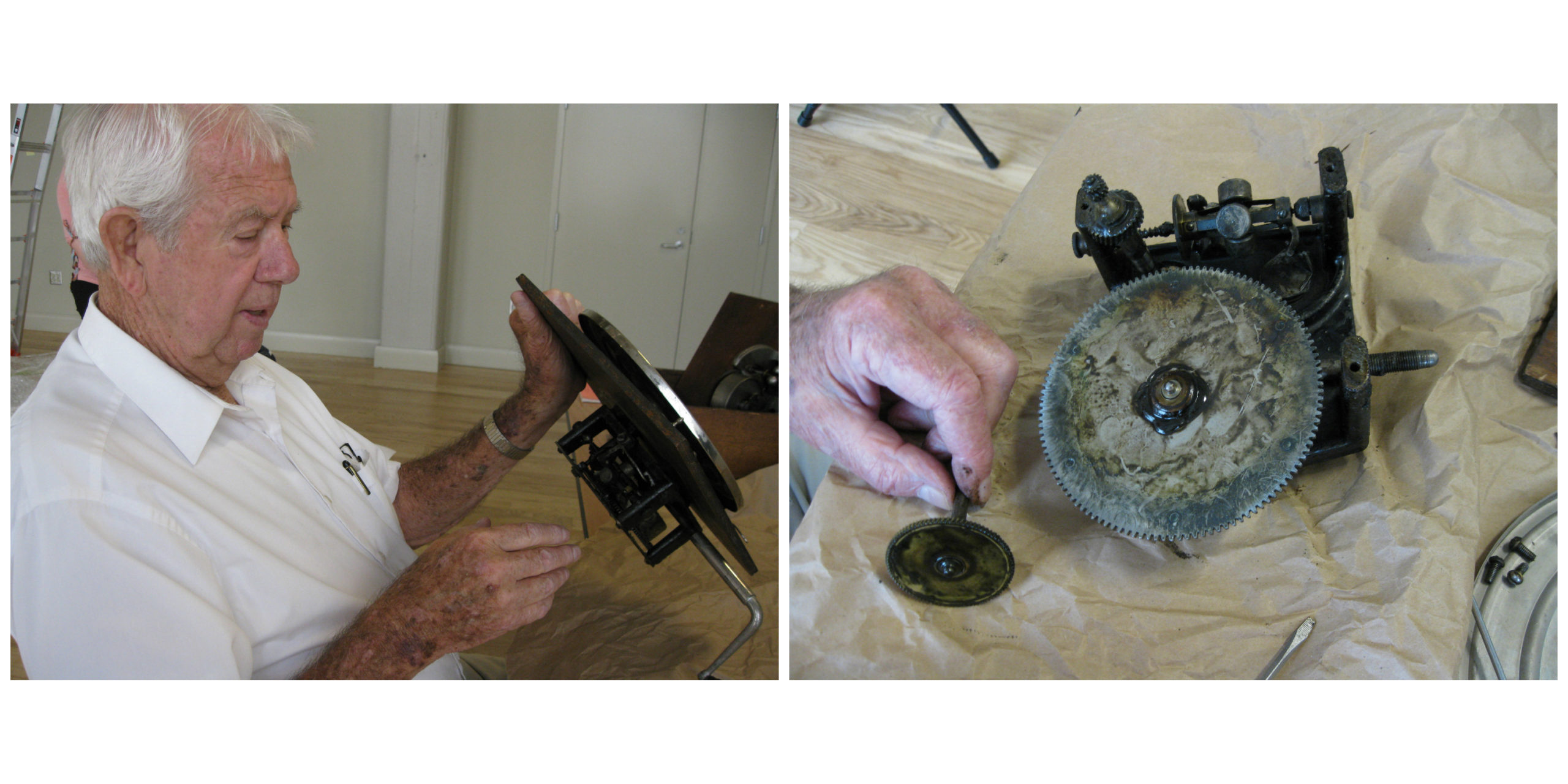Whew! It’s been a long few weeks – even months – here at the Birthplace of Country Music Museum. We’ve planned and designed materials. We’ve hammered and painted. We’ve found parking spots for tractor trailers and forklifted huge crates into the museum. We’ve hung photographs and artfully arranged objects. We’ve made messes and tidied up.
All of these efforts have been working towards our new special exhibit Things Come Apart, which comes to us from the Smithsonian Institution Traveling Exhibition Service and opens today. The exhibit features the work of artist Todd McLellan – 39 extraordinary photographs, 4 disassembled objects, and 5 short videos, all exploring the inner workings of common, everyday possessions. From a record player to a telescope to a two-seater light aircraft – and more – the images and objects invite the viewer to reflect on how things are designed and made and how technology has evolved over time. The exhibit also includes three fun and educational activity kits created by the Smithsonian’s Lemelson Center for the Study of Invention and Innovation’s Spark!Lab.

Things Come Apart is not our “usual” type of exhibit, one where the focus is on the history of early country music, the musical legacy of this region, or other related social and cultural topics. However, one of our aims with the museum’s Special Exhibits Gallery is to also choose interesting and engaging exhibits that will serve to bring new audiences into the museum and expand the educational resources offered to our local community. With this type of exhibit, we also work hard to find ways to relate the exhibit’s subject to our content or to music, for instance through panels and artifact supplements or the related programming and outreach.
Things Come Apart effectively fits those goals through its distinctive subject matter – one that should appeal to a different audience along with our everyday visitors – and through its focus on STEAM (science, technology, engineering, art, and math) content. The activity kits are a tangible and hands-on manifestation of that STEAM focus, perfect for working with schools and youth groups, and combined with the exhibit, they offer a unique supplement to the curricula in our local schools. And while we have spent months bringing Things Come Apart to fruition and are wonderfully excited to have this very special Smithsonian exhibit here at the museum, it’s been the supplementing that has really caught our imaginations and given us opportunities to create some truly interesting displays and plan a host of engaging programs.
The exhibit highlights several musical instruments and sound-related gadgets in its exploration of design and technological innovation, which gives us a great opportunity to relate the exhibit to our content. For one thing, the photographs of the piano and accordion taken down to their component parts will hopefully prompt our visitors to also consider the complexity and functionality of the instruments used in the 1927 Bristol Sessions recordings – from the Frankenstein-like harp guitar to the more basic kazoo.
Secondly, the focus on technology in Things Come Apart can be related to an important part of the story told in our permanent exhibits – that of the importance of technological developments to the success and legacy of the 1927 Bristol Sessions, and how technology was instrumental in the distribution of these early commercial country music recordings.

We also decided early on in the planning process that we would include an object or two related to the museum’s content, taking apart and displaying them to go along with the four disassembled objects already present in Things Come Apart. The first object we tackled was a circa 1900—1910 phonograph, donated to us by Bob Bledsoe, a favorite friend of the museum and an expert on all things to do with early cylinder players and phonographs, and his son John. We spent a happy morning with them both, taking a Columbia Graphophone phonograph down to its three largest components: base, top and turntable with attached motor, and horn, along with a second non-working motor down to its smaller components. It was dirty but interesting work – two days later I still had 100-year old grease underneath my fingernails! We also took apart a broken guitar, even sawing it in half so that the inner struts, bracing, and tone bars could be seen by our visitors.

Planning museum programs is always a challenge as there are so many “moving parts” – creating engaging activities and experiences that tie into the museum content and mission; tapping into limited staff, volunteer, and financial resources in order to hold those programs; marketing the events effectively and widely; working with partner organizations; and so much more. For Things Come Apart, we spent a lot of time thinking about those challenges and how best to share the resource of this exhibit with a wide variety of visitors. We decided to focus on the invention / maker side of things, including participating in the Kingsport Mini Maker Faire, screening films about Edison, Tesla, and the making of a Steinway piano, and hosting our own Family Fun Day maker-type event. The Family Fun Day is the event I am most excited about – a chance for us to do a different type of programming and work with some great partners to pull together a host of activities including an introduction to 3D printing by the folks at the Bristol Public Library, an “art from found objects” demo by local artisan Terry Clark, and a recycling craft from the Bristol Rhythm & Roots Green Team – and more!
For the museum, an exhibit like Things Come Apart presents a golden opportunity to bring a really wonderful educational resource to our community, one that they might not otherwise be able to access, and to invite new – and old – visitors into our space to experience this wonderful exhibit and our museum. But it also gives us the chance to learn more ourselves and to stretch outside our usual wheelhouse, which is always exciting.
This exhibit is a visual display of what we do as a museum every day: take things apart and dig deeply into their content, look at how things fit together, and ask visitors to share in those experiences. At our museum, it’s the ongoing taking of things apart and exploring them that brings real meaning to our work. These are the things that keep us going!
René Rodgers is Curator of Exhibits & Publications at the Birthplace of Country Music Museum. You can visit the Things Come Apart exhibit from July 15 to October 8, 2017.


